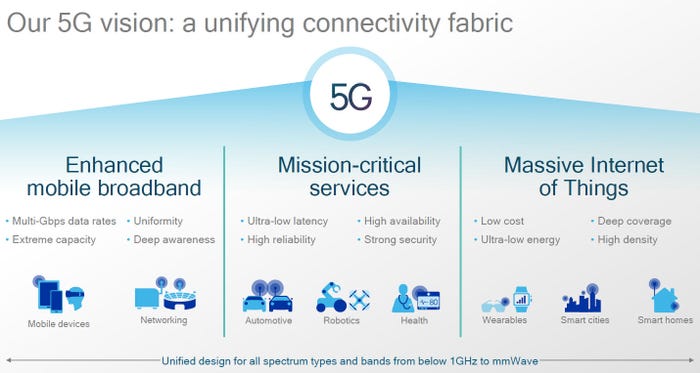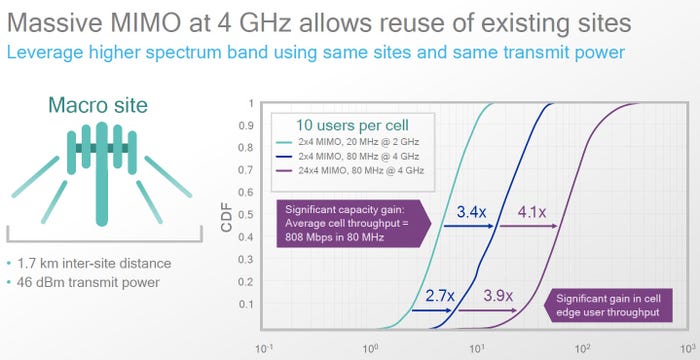Incremental 5G progress announcements reach new levels of mania
Even by the indiscriminate nature of the telecoms industry, announcements have been coming thick and fast in recent days, as the 5G jostling frenzy reaches fever pitch.
September 21, 2016

Even by the indiscriminate nature of the telecoms industry, announcements have been coming thick and fast in recent days, as the 5G jostling frenzy reaches fever pitch.
Nokia especially likes to release its missives in clusters and has managed no less than 13 since the start of last week. Spare a thought for Nokia’s PR department, which must have been subsisting entirely on coffee, energy bars and adrenaline over that time. Telecoms.com covered one or two of them and, inevitably, 5G featured strongly.
Most recently Nokia talked up a joint effort with T-Mobile US to test pre-5G goodness using the Nokia AirScale platform over TMUS’s 28 GHz spectrum. The headline claimed achievements from this latest incremental step was throughput of several (unspecified) Gbps, latency of 1.8 milliseconds and the gratuitous streaming of four 4K videos at the same time. That’s some hardcore 5G action right there.
Not to be out-done Huawei proudly unveiled what is claims is the first 5G-oriented Mobile Edge Computing solution and called it MEC@CloudEdge. A key feature of MEC is bringing the cloud physically closer to base stations, which should help with key 5G goodness such as low-latency, IoT support, etc, as well as handy things like localised content. Inevitably Nokia also had an announcement about this sort of thing, which you can read more about on Light Reading.
Huawei’s great Chinese rival ZTE was not about to take all this crowing and posturing lying down and has whacked out a couple of 5G announcements this week alone. Its Massive MIMO 2.0 solution is, of course, pre-5G – a term already becoming so ubiquitous as to be implicit and thus pretty much redundant. The big deal with this version is spectral efficiency, with good old 16-stream spacial division multiplexing doing the trick nicely. To support all this ZTE is boldly laying claim to the first access-layer 100G packet transport product and given it the unforgettable name: ZXCTN 6180H.
Korea is pretty keen to be the front-runner in the 5G marathon, so recently SK Telecom and Samsung got together to field-test handover between 5G (not even ‘pre’ this time!) base stations using 28 GHz spectrum in an outdoor environment, building on similar 5G larks a year ago. LR was once more all over this story.
Qualcomm, by contrast, seems to have been pacing itself in the 5G race, perhaps waiting until the big kit vendors completely exhaust their PR teams before making its move. The chip giant did pick up the pace this week, however, inviting us to hear all about how Qualcomm is modestly ‘leading the world to 5G’. While the presentation had the potential to be Death By Powerpoint it was, to be fair, a useful and informative look at where we are now with 5G and how things are likely to play out over the next few years.
Our host was Qualcomm Biz Dev director Ben Timmons who, he reminded us, has been doing this since 1G. With that perspective he reckons 5G is more coherent and developed at this stage than any previous G. One of the reasons is that everyone seems to agree what the point of it is, other than to give telecoms marketing departments something to obsess about, as we observed at 5G World earlier this year and as shown by the slide below.

One of the biggest differences this time is the use of spectrum. Any frequencies much higher than 3GHz had previously been disregarded due to their rubbish propagation properties – i.e. range and building penetration. While one way of overcoming this is by using loads of small cells as signal boosters, the aforementioned massive MIMO is going to use loads of antennae to allow transmissions to be much more targeted and thus effective.

In terms of timings, Timmons reckons we could see the first 5G devices, which are likely to be smartphones, as early as 2019, depending on how the standardisation process plays out. The initial emphasis is likely to be on headline-grabbing 1 Gbps wireless data rates with all the other stuff like IoT support and mission-critical capabilities, which Timmons thinks might end up being the most important feature of all, appearing when they’re good and ready.

As Timmons observed it’s easy to take the piss out of all this 5G mania, and we intend to keep doing so. But underneath all the spam and hyperbole is a degree of industry transparency and excitement that can only be positive. The implications of 5G will extend far beyond mobile phones and could catalyse a global economic boom, so that’s worth getting a bit worked up about, just not necessarily every day.
About the Author
You May Also Like


.png?width=300&auto=webp&quality=80&disable=upscale)







.png?width=300&auto=webp&quality=80&disable=upscale)


_1.jpg?width=300&auto=webp&quality=80&disable=upscale)